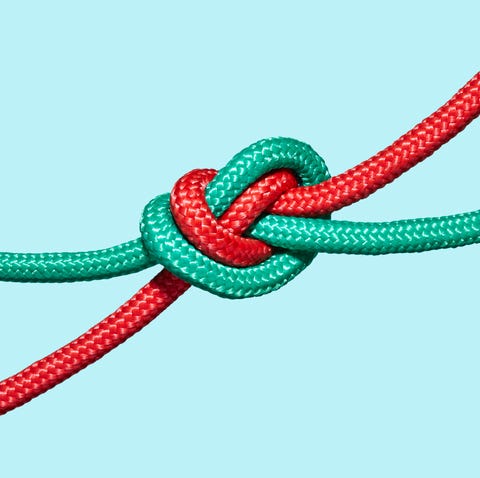
Richard DruryGetty Images
We’ve probably all experienced it: a sudden sharp pain in the calf or hamstring that makes us gasp for breath. Known as a charley horse, it happens when a muscle, commonly in the leg, suddenly contracts and tightens rock-hard. This often occurs after a long or intense workout, especially in hot weather, but cramps can also hit out of nowhere.
They may be brought on by dehydration, fatigue, overexertion, or electrolyte depletion, which cause nerves to misfire; they usually vanish within 15 minutes, tend to become more prevalent with age, and are more common in women than in men. If a cramp lasts longer than 30 minutes, call your doctor, because it could be a sign of a more serious problem such as a narrowed artery or a neurological condition, says Bryant Walrod, M.D., a sports medicine physician at the Ohio State University Wexner Medical Center.
To help keep muscles calm and the pain at bay, try these steps.
How to prevent muscle cramps
✔️ Boost your fitness.
We lose muscle mass and strength as early as our 30s, which contributes to fatigue and overexertion—key cramp triggers. “Regularly active muscles get used to contraction and are less predisposed to spasm,” says Matthew Matava, M.D., chief of sports medicine at Washington University Orthopedics in St. Louis.
Start with moderate activity to avoid overdoing it, and stretch before and afterward; this increases blood flow and lengthens muscle fibers to make them less likely to tighten involuntarily.
✔️ Get your minerals.
Load up on fruits and vegetables rich in electrolyte minerals such as sodium, magnesium, and potassium, which help spark electrical signals that regulate muscle function. “Most people can get all the electrolytes they need in a healthy diet,” Dr. Matava says, so there’s no need to sip sugary sports drinks. Top food picks: leafy greens, bananas, and black beans.
✔️ Drink up.
Fluid helps muscles relax and contract, so down plenty of water throughout the day, especially in hot weather when sweat depletes the body’s fluid and electrolyte stores. Be sure to drink an hour before, during, and after working out to rehydrate.
How to get muscle cramp relief
✔️ Work those muscles.
Gently massage and stretch a cramped muscle to help it relax. “Try contracting the muscle group opposite the one that is cramping; this utilizes the body’s normal reflex that ‘turns off’ a muscle that has the opposite function,” says Dr. Matava. For example, contracting the quad muscle at the front of the thigh can help relieve cramping of hamstring muscles in the back.
✔️ Apply heat or ice.
A warm towel or a heating pad can help soothe the ouch by boosting blood flow. If pain lingers post-cramps, ice can help tame inflammation and ease discomfort.
✔️ Manage your meds.
Muscle cramps can be a side effect of some medications for high blood pressure, high cholesterol, and asthma. Ask your doctor about a lower dose or a different drug that doesn’t cause muscle spasms.
This article originally appeared in the September 2020 issue of Prevention.
Support from readers like you helps us do our best work. Go here to subscribe to Prevention and get 12 FREE gifts. And sign up for our FREE newsletter here for daily health, nutrition, and fitness advice.
Richard Laliberte
Richard Laliberte is an award-winning veteran health journalist and former senior writer at Men’s Health who writes for some of the nation’s best-known magazines, blogs for WeightWatchers.com, and has authored several books.
This content is created and maintained by a third party, and imported onto this page to help users provide their email addresses. You may be able to find more information about this and similar content at piano.io

